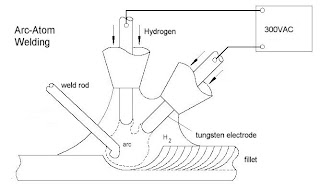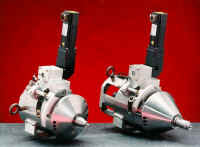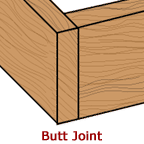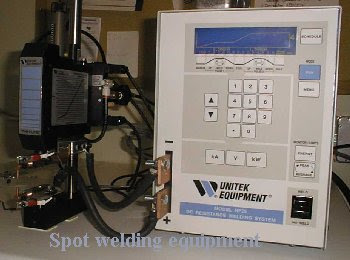Features of Fusion Welded Joint

A typical fusion weld joint consists of fusion zone, weld interface, heat affected zone and unaffected base metal zone.
Welders | Hobart | Lincoln | Miller | Tig | Mig
Labels: Fusion Welding Joints, Welding Joints
|
|||||||||||||
|
|||||||||||||

Labels: Fusion Welding Joints, Welding Joints
Labels: Aluminum welders, Aluminum welding
Developed in the 1970's, magnetic rotating arc welding is also known as magnetarc welding or magnetically impelled arc butt (MIAB) welding . It is defined as "an arc welding process in which an arc is created between the butted ends of tubes and propelled around the weld joint by a magnetic field, followed by an upsetting operation." The procedure is a mixture of arc and forge welding with a gas shielding operation added on. This method of welding by clamping the parts to be joined into the machine. Next, the two pieces are pushed together and electricity is applied to them. As they are separated, an arc is started. When the arc is established, a magnetic coil around the weld repels the arc, which pushes it around the perimeter of the piece. The arc runs around the piece at a speed close to 50 meters a second. At this speed the arc looks as though it is a circle of light between the pieces. After the arc has run around the piece for a determined amount of time, the two pieces are pressed together to join them .
This process is now very popular in mass production situations. The entire system is fast, can be automated, and requires less energy than other types of welding. The parts do not need to be cylindrical and the welds are repeatable with high quality and little deformities. Also, this welding does not expel as much metal as does other forms of welding, which makes MIAB welding more efficient. The drawback comes from the fact that the arc only heats the edges of the pieces, not the middle. This means that only a certain thickness of metal can be welded in this fashion and that solid pieces of metal cannot be joined.Labels: ARC Welders, Arc welding

This process involves injecting hydrogen into extreme heat in the arc, the temperature makes the hydrogen gas (H2) and breaks it down into its simplest form, which would be two hydrogen atoms. The arc is formed between two tungsten electrodes, not between the metal workpiece and the electrodes as in other types of arc welding. This process absorbs energy away from the arc, but gives it back as the hydrogen recombines as it contacts the metal work surface. The procedure uses the heat from the reaction to heat the metal. The temperature of the flame reaches 3700°C and can then be used for welding . The arc in this case does not have much of an effect on the weld except it can increase the temperature some as the electrodes get closer to the weld pool. The transformer for this operation is generally around 300 volts, so caution is needed.
For years hydrogen arc welding was used for hard-to-weld metals such as nickel-base alloys and high alloy steels. The hydrogen used helped reduce gas bubbles in the weld, which provided a seam with fewer pores. This makes a much stronger weld because more metal is holding the pieces together. The hydrogen is also good due to the fact that other gases cannot enter the weld pool because it is protected by the stream of hydrogen gas. This process has been almost overshadowed by inert-gas arc welding.
Labels: ARC Welders, Arc welding
Air Plasma Cutting Advantages

Labels: Air Plasma Cutting, Plasma Cutters, plasma cutting machines




Labels: Friction Stir Welding, Welders
Accident Hazards
Physical Hazards
Chemical Hazards
Biological Hazards
Ergonomic, psychosocial and organizational factors
Labels: Arc weldings, Welders

Labels: consumables plasma cutter, Plasma Arc Cutter Torch, Plasma Cutter

Labels: Arc Cutters, Plasma Cutters
 For light materials the square-edge butt joint is the easiest to prepare and can be welded without filler rod. It consists of “butting” two pieces of metal up against one another (no overlapping) and then welding along the seam between them. If the weld is to be made without filler rod, extreme care must be taken to avoid burning through the metal.
For light materials the square-edge butt joint is the easiest to prepare and can be welded without filler rod. It consists of “butting” two pieces of metal up against one another (no overlapping) and then welding along the seam between them. If the weld is to be made without filler rod, extreme care must be taken to avoid burning through the metal.

Labels: Butt Joint, Welding Joints

Labels: Resistance Spot Welding, Spot Welders, Spot Welding